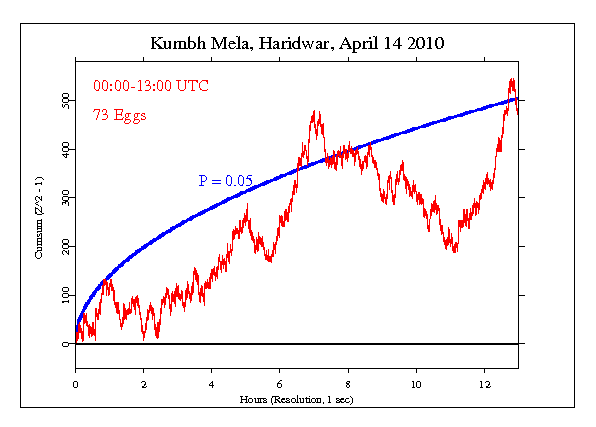|
From New York Times:
HARIDWAR, India -- Over the bridge they came, Hindu holy
men by the tens of thousands, the most devout naked and
dusted with sacramental powder, marching toward the bathing
pool in the Ganges where the water is considered holiest on
this most propitious of days.
Hindu devotees lined the river Ganges during the Kumbh Mela
festival in Haridwar on Wednesday.
Shouting and singing, waving tridents or spears, the naked
mystics, or naga sadhus, were granted the first plunge.
Then came the gurus and swamis, wrapped in saffron robes, a
few shaded by beaded parasols. One swami was delivered into
the water on the shoulders of his disciples. For 20 minutes,
they frolicked, as other pilgrims watched from nearby
rooftops.
And then time was up. The police tweeted their whistles and
began nudging the group out of the sacred water. There were
still untold thousands of holy men waiting to take a dip.
Wednesday was the culmination of the Hindu religious
festival known as the Kumbh Mela, a staggering outpouring of
humanity that also represents a staggering logistical
challenge.
Since January, tens of millions of pilgrims have arrived in
this city by train, plane, bus or foot for the privilege of
bathing in the Ganges on certain auspicious dates. On
Wednesday alone, 10 million people were estimated to have
entered the water. The crowds are so massive that safety is
a serious concern.
The GCP event was set with the same parameters as the Kumbh
Mela in 2003, for the period 00:00 to 13:00 UTC, which covers the daylight
hours in Haridwar. The result is Chisquare 47283.8 on 46800
df, for p = 0.057 and Z = 1.578.
It should be noted that another "global event" occured also
on this day, namely a big earthquake in Western China.
See the next entry in this table.
We can only speculate whether the two global
events, the huge religious gathering of
millions in Haridwar, India and the China quake had a
cumulative effect. Moreover, in
addition to these focused events, this time is associated
with yet another potentially effective global event, namely,
the Iceland volcano eruption which resulted in several days
of worldwide attention to the disruptive shutdown of air
travel in the
UK and parts of Europe. For a look at this,
we show an exploration of the Icelandic
Volcano Dust Cloud effect.

It is important to keep in mind that we have only a tiny
statistical
effect, so that it is always hard to distinguish signal from
noise. This means that every "success" might be largely
driven by chance, and every "null" might include a real
signal overwhelmed by noise. In the long run, a real effect
can
be identified only by patiently accumulating replications of
similar analyses.
| 